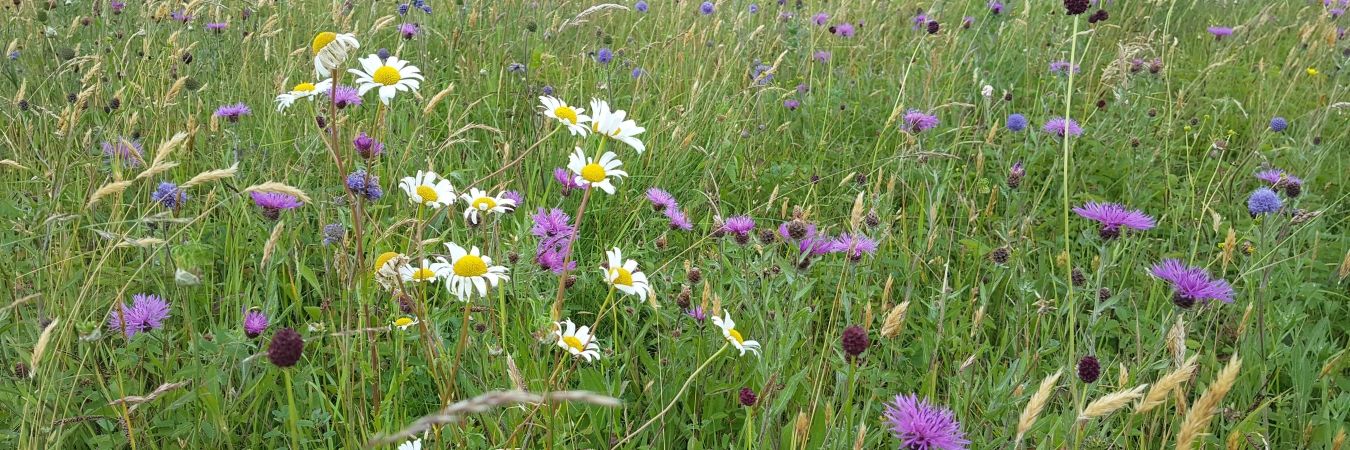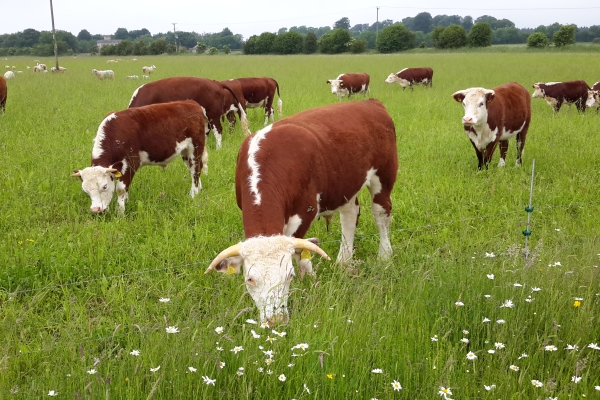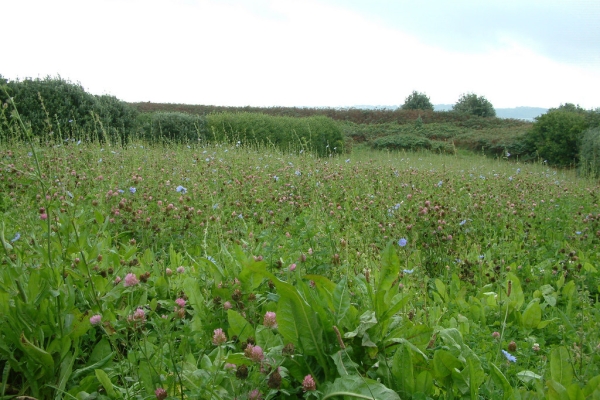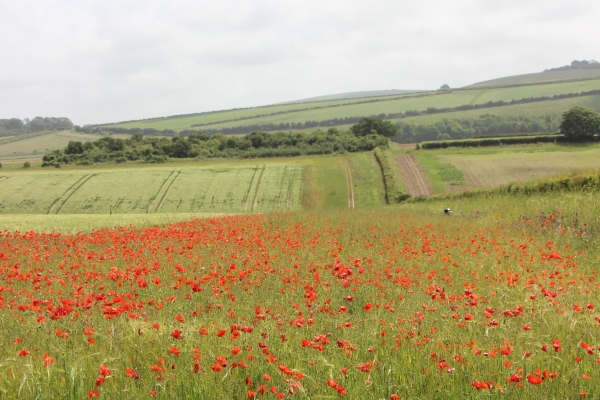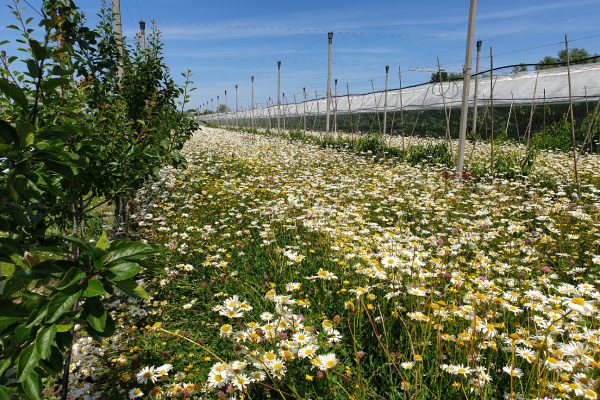How hay makes meadows
A healthy floodplain meadow in June is a spectacular sight, teeming with life in every hue. So, it may seem odd that this is also the time farmers choose to mow it all down for hay. But they’ve been doing this for centuries and it turns out meadows thrive, not only despite this intervention, but because of it – proving that not all human impacts are negative. It is true that Britain’s floodplain meadows have been in retreat since World War II, due to agricultural intensification and urban sprawl. With changing environmental and agricultural legislation, we now have a once in a generation opportunity to turn this around.
You see, floodplain meadows are a man-made system – a result of traditional farming practices – and we need to support our farmers to ensure this valuable habitat survives. This will not only benefit sustainable nature-friendly food production, but also carbon storage, flood management and biodiversity conservation. This is a truly multi-functional landscape and my research aims to help farmers balance agricultural production with biodiversity conservation. Here’s how…
The nutrient pump
Historically hay was cut on these wet meadows in late June, whilst many species are in flower, as this is the best way to produce a high-quality, nutritious hay crop for agricultural use. That’s because, as plants grow, they take up nutrients from the soil and incorporate them into their leaves, flowers and seeds. Plant growth is the pump that moves nutrients through the system.
After flowering, much of those nutrients are either shed as seed, or are reabsorbed back into below-ground stores for later use. So, interrupting that by cutting hay whilst those nutrients are above-ground is a great way to remove nutrients from the soil, capturing them as a useful fodder crop.
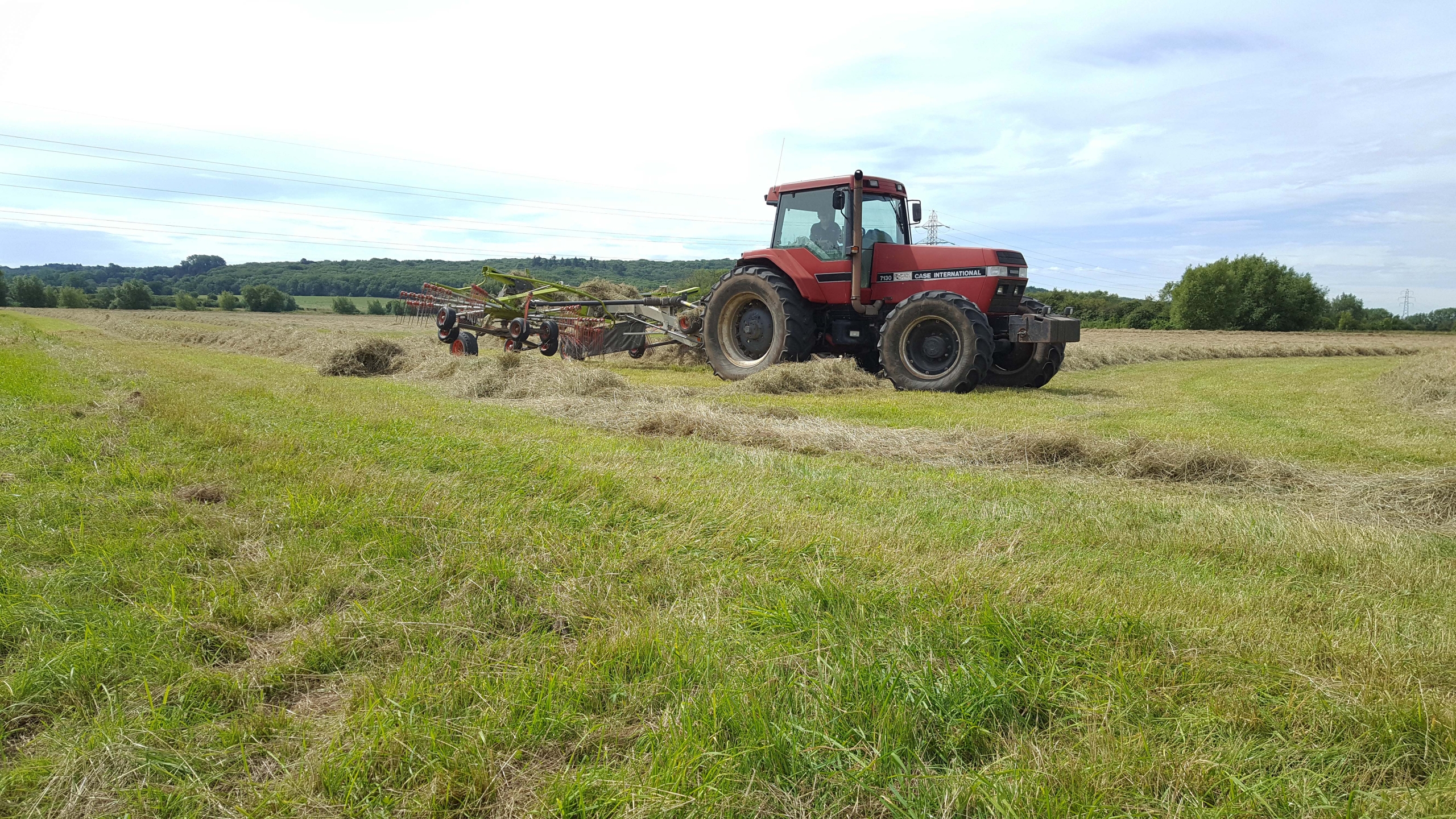
Strangely, removing soil nutrients is not only good for the quality of hay, and the animals that eat it, but also for the meadow itself. These wet meadows are naturally fertile as they receive a wealth of nutrients from the sediments that are deposited during flooding. If soil nutrients are allowed to build up, tall competitive species can take over, crowding out the delicate flowers we all love so much – like devil’s-bit scabious, cuckoo flower and lady’s bedstraw – and reducing the number of different species in the meadow. Fewer plant species means fewer farmland insects, but we can prevent this decline by ensuring that hay is cut and removed every summer to maintain the plant diversity that supports the whole meadow system.
You might be concerned that a June cut wouldn’t allow wildflowers time to set seed and reproduce. However, many of these are long-lived species that can also reproduce by forming clones – without the need for seed. What might surprise you is that some of these delicate-looking plants may actually be over 100 years old – at least as old as many of the trees and hedges nearby – and only need to set seed on those occasional years when hay cutting is delayed due to flooding or bad weather. These plants have come to thrive in our hay meadows because they can compete well under the annual cycle of traditional haymaking.
A healthy meadow with a wide range of plants will provide nectar for our declining pollinators and nesting territory for visitors such as the curlew. When these meadows are part of a varied floodplain ecosystem with a range of connected habitats – including grasslands, woodlands and wetlands – there is space enough for all these species to flourish.
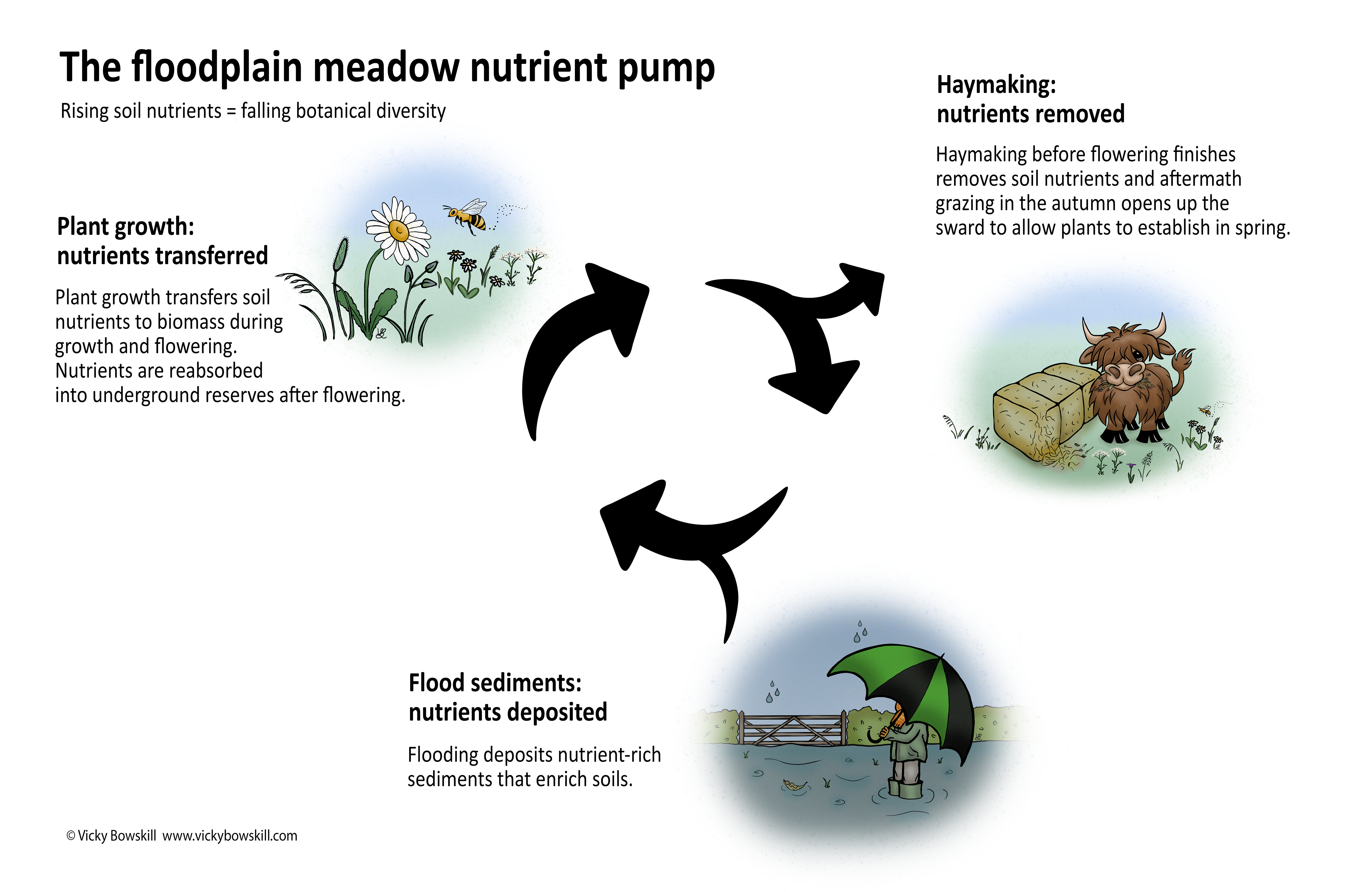
The aftermath
Meadow plants recover swiftly after mowing because they have a survival strategy involving underground energy stores gleaned from the fertile soils, so they have everything they need to spring back to life quickly and have a second flush. This secondary growth is known as the aftermath and grazing this with livestock in the autumn creates gaps for seeds to settle and take root the following spring.
This cycle of summer hay cutting and aftermath grazing ensures a broad range of plants will continue to thrive here in the long term. These plants create a diverse habitat structure and varied food sources for insects and other animals who rely on these high nature value meadows. And the evolving post-Brexit policy landscape presents us with a rare opportunity to ensure that our emerging nature-friendly farming culture can, not only halt the decline of this valuable habitat, but begin to restore this essential part of our landscape.
The research
This is where my research comes in. I’m looking at how hay yield and a range of dietary minerals change during the growing season in mixed species floodplain meadows. Understanding the timing of these crucial nutrient dynamics will help land managers to optimise the nutritional value of their hay crop, whilst also managing soil nutrients and promoting botanical diversity. This diversity of plant species not only supports all the insects, birds and other wildlife that depends on these meadows, but also provides a range of plant medicinal compounds that can benefit livestock health and the quality of farm produce. An important part of my research is speaking with land managers to find out their views on different approaches to haymaking to properly understand the on-farm practicalities. This project will run until 2023 and you can find out more at www.vickybowskill.com or www.floodplainmeadows.org.uk.
Further reading
- The Floodplain Meadows Partnership: About meadows
- Rothero, E; Lake, S; Gowing, D. (2016). Floodplain Meadows – Beauty and Utility A Technical Handbook.
- Poptcheva, K., Schwartze, P., Vogel, A., Kleinebecker, T., & Hölzel, N. (2009). Changes in wet meadow vegetation after 20 years of different management in a field experiment (North-West Germany). Agriculture, Ecosystems and Environment, 134(1–2), 108–114.
- De Witte, L. C., & Stöcklin, J. (2010). Longevity of clonal plants: Why it matters and how to measure it. In Annals of Botany (Vol. 106, Issue 6, pp. 859–870).
- Humbert, J. Y., Pellet, J., Buri, P., & Arlettaz, R. (2012). Does delaying the first mowing date benefit biodiversity in meadowland? Environmental Evidence, 1(1), 1–13.
- Bissels, S., Donath, T. W., Hölzel, N., & Otte, A. (2006). Effects of different mowing regimes on seedling recruitment in alluvial grasslands. Basic and Applied Ecology, 7(5), 433–442.
- Floodplain Meadows Partnership: Newsletters
Header image shows Yarnton Mead June meadows. Managing soil nutrients through timely hay cutting promotes botanical diversity.
All images and floodplain meadow nutrient pump illustration © Vicky Bowskill (www.vickybowskill.com). CC BY-NC-ND
